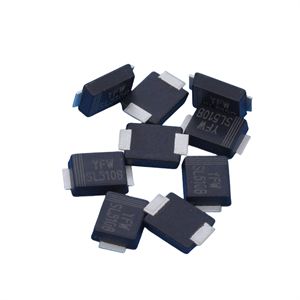Date:2024-11-16 Categories:Product knowledge Hits:413 From:Guangdong Youfeng Microelectronics Co., Ltd
The working principle of tunneling field-effect transistor (TFET) is interband tunneling, and its S can break through the limit of 60mV/decade. Moreover, the Ioff of TFET is very low, so the operating voltage of TFET can be further reduced.
Under relatively small gate voltage conditions, the Ion and Ion/Ioff of TFET will be greater than those of traditional MOSFTE. So TFET is considered a very promising logic CMOS device with low operating voltage and low power consumption.
In addition to using a multi gate structure to improve the gate control capability of the device and TFET with S less than 60mV/decade, another method to reduce the power consumption of integrated circuits is to lower the operating voltage of the transistor, Vdd.
The traditional MOSFET proportional reduction principle assumes that the threshold voltage can also be proportionally reduced, but in reality, the threshold voltage does not follow this principle. So continuously reducing the operating voltage will inevitably lead to a decrease in the driving capability of the gate (Vd Vth).
When the gate driving capability decreases, the driving current Ion of the device will decrease. The decrease of Ion increases the delay (t=CVdd/Ion) of the device or reduces the switching speed of the device. Due to the higher electron mobility of InAs and GaAs compared to Si, and the higher hole mobility of Ge and InSb compared to Si, using these high mobility materials as channel materials for devices can alleviate the decrease in Ion caused by the decrease in (Vd Vth). Therefore, in high-speed and low-power integrated circuits, III-V materials and Ge are both promising channel materials for devices.

Previous: Classification, Structure, and Principle of MOSFET